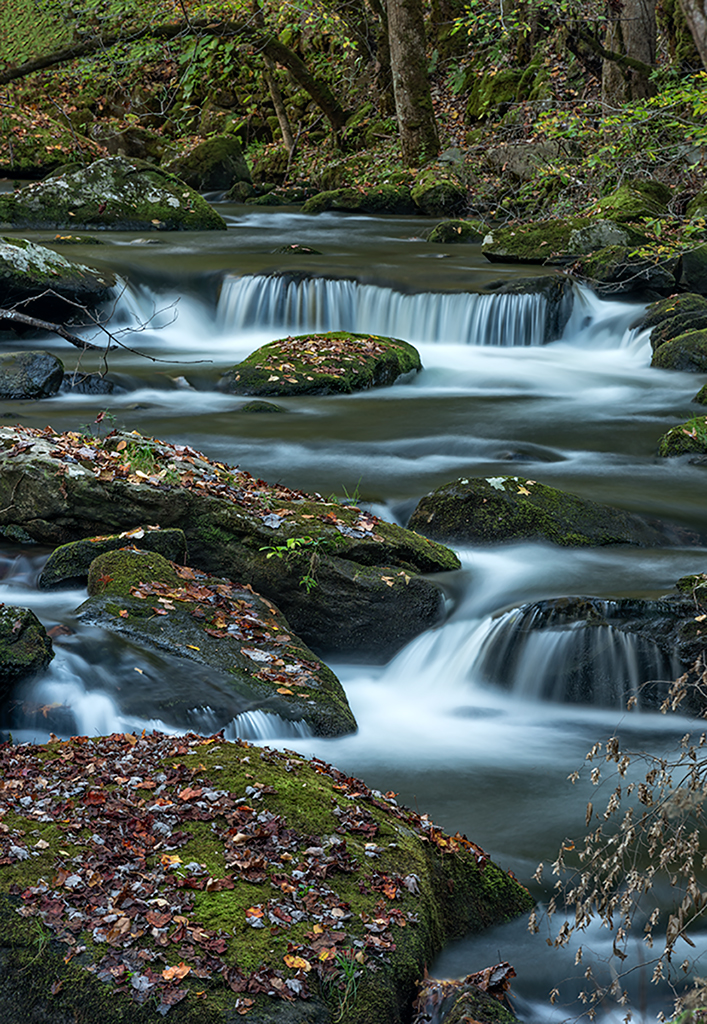Editor’s note: This post is a little different from our regular feature articles by leading photographers using Singh-Ray filters. Instead, it is a response to numerous inquiries we’ve received for tips on using solid neutral density filters, arguably one of today’s most popular creative tools for photographers. Singh-Ray pioneered the development of these filters and now offers a choice of 5-, 10-, 15- and 20-stops.
We’re often asked, “Which should I have in my bag?” but that clearly depends on the types of effects/images you are looking for, the time of day and the lighting conditions. You might, for example, initially use no filter prior to sunrise, add a 5-stop as the light brightens a bit, then switch to a 10-stop as the light brightens more. The exposure chart below gives you some guidelines on which filters will achieve your target exposure times.
To help with that decision, over the next few days we’re posting four brief “tip/fact sheets” on using each of our solid neutral density filters. We hope this is helpful – and of course, if you have any questions, please contact me at steve@singh-ray.com.
The Mor-Slo 5-stop solid neutral density filter
The 5-stop is most commonly used to lengthen exposure to the 1/15th second to 15 second range:
– To smooth out streams, rivers and waterfalls
– To lengthen traffic trails
– To add time to camera movement techniques, such as pans and swipes
– In lower light conditions (overcast, dusk, etc.) to create 15+ second exposures and more dramatic effects
- In low light (dawn, dusk and overcast), a 1/15 second exposure becomes 2 seconds and 1/2 second becomes 16 seconds.
- In brighter light, a 1/250 second exposure becomes 1/8 second and 1/60 becomes 1/2 second.
- Can be used together with a Vari-N-Duo variable neutral density filter to eliminate reflections and increase density to 13 stops.
- Excellent for black & white, too.

1/2 sec. with Singh-Ray Mor-Slo 5-stop filter, Nikon D800E, Nikon 70-200 VRII lens at 140mm, f18, ISO200, photo by Steve Ellis
Exposure chart
 Fact: If 100% of the light is transmitted with no filter, only 3.5% of the light is transmitted with the 5-stop Mor-Slo!
Fact: If 100% of the light is transmitted with no filter, only 3.5% of the light is transmitted with the 5-stop Mor-Slo!

10 sec. with Singh-Ray Mor-Slo 5-stop filter, Nikon D810, Nikon 70-200 VRII lens at 200mm, f16, ISO100, photo by Steve Ellis
Suggestions for using:
- Use a sturdy tripod and locking cable release
- Close your viewfinder shutter for multi-second exposures.
- As a further precaution against light leaks through other parts of your camera and lens on exposures over 20-30 seconds, cover your camera and lens barrel with a towel or other lightproof material like a hat.
- In most conditions, you will be able to compose, auto or manually focus and determine correct exposure with the 5-stop Mor-Slo attached to your lens.
- You can also determine the correct exposure without the Mor-Slo filter attached, then use the table above or a smartphone app (such as ND Timer or LongTime) to obtain the correct exposure time with the filter attached.
- After you have made the exposure, check your camera’s histogram to make sure there is no clipping and that your data is relatively closer to the right side of the histogram than the left side. Adjust your exposure accordingly.
- Try stacking Mor-Slo’s with Singh-Ray LB polarizing filters or a Vari-N-Duo to achieve incremental density increases, reduce glare and enhance colors. When stacking, at least one of the filters must have a standard ring mount. When using the Vari-N-Duo, dial it down to minimum density to compose, focus and determine exposure. Turn off your camera’s auto focus and dial in desired density. Then carefully attach the Mor-Slo, so that you do not change the variable ND setting.
- Combine with the Singh-Ray Color Intensifier filter to extend the grey scale and produce more dramatic black & white images.
- Vignetting may occur when stacking ring filters and/or shooting at very wide angles. Keep an eye on the corners of your viewfinder. Some customers who regularly shoot at very wide angles find it helpful to use a larger filter and a step-up ring
- If your exposure time is 30 seconds or more, especially in brighter lighter light, we strongly recommend closing the eyepiece and covering your camera body and lens barrel with a light-proof material (hat, windbreaker, etc.)
Singh-Ray Mor-Slo solid neutral density filters are the industry standard for unsurpassed optical quality and color performance, for superior image quality and absolutely no color cast.
Visit the “tips & techniques” section of our website at www.singh-ray.com for articles and tips by top pros about using the Mor-Slo and our other filters.

